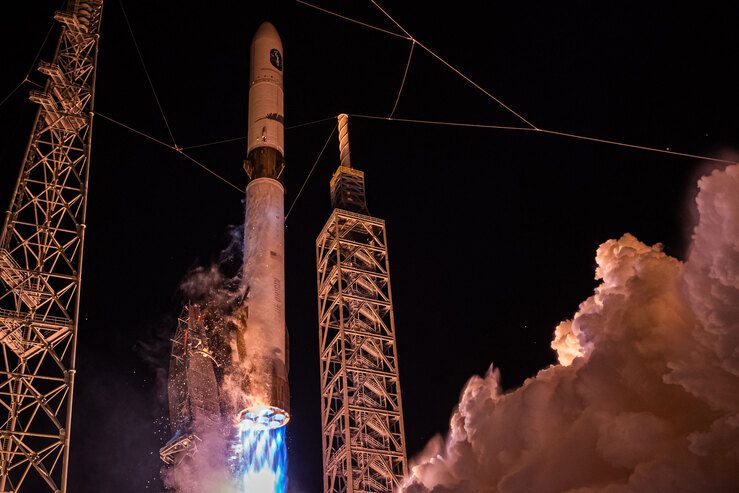Picture solar panels silently floating in Earth’s orbit, constantly basking in sunlight. Unlike ground-based solar panels, these space-based arrays never contend with nightfall or cloud cover. Instead, they enjoy unbroken exposure to sunlight, efficiently converting it into electricity.
The transformative aspect of this technology lies in how the energy is relayed back to Earth. Electricity generated in space transforms into microwave or laser beams, which traverse the atmosphere with minimal loss. This energy is targeted at Earth-based receiving stations called “rectennas,” where it’s reconverted into electricity for the power grid.
This concept, known as space-based solar power (SBSP), promises to revolutionize clean energy distribution. Unlike terrestrial solar panels, which are limited by daylight and weather, space-based arrays could provide continuous, clean energy to Earth, potentially reshaping the global energy landscape.
Dr. Leet Wood, the chief energy advisor for the Space Frontier Foundation, highlighted the concept’s longevity, stating, “There are a number of different architectures that have been considered over the years, and I should point out that this concept has been around for a number of decades.” The focus is on large satellites with substantial solar PV arrays in geosynchronous orbit.
Due to their orbital placement, these panels remain in sunlight almost continuously, with predictable eclipses. Wood emphasized that this distinguishes them from traditional solar power, stating, “You’re not having to deal with the day-night cycle. You’re not having to deal with weather. These solar panels are constantly irradiated.”
The process involves converting direct-current (DC) power into a high-power microwave beam, a technology akin to military radar systems. This beam is sent to Earth and received by a rectenna, which converts it back into DC power before transforming it into alternating current (AC) for grid use. Wood mentioned, “There are different architectures that have been considered, but that’s sort of our baseline.”
Alex Gilbert, a fellow at the Payne Institute for Public Policy, noted, “The behavior of space-based solar power is unique as an energy resource.” While similar to renewable energy in its environmental impact, it offers flexibility in power transmission, allowing energy to be directed anywhere within the satellite’s line of sight.
Historically, the prohibitive cost of launching equipment into space hampered SBSP development. However, advancements by companies like SpaceX and Blue Origin are reducing these costs. Gilbert observed, “We’re seeing a transformation in how space is done. It’s no longer space for government applications with government oversight of traditional contractors; it is commercial space for government and commercial users.”

The U.S. is poised to have two operational super-heavy launch vehicles comparable in size to the Saturn V. Gilbert explained, “That’s how you can reduce costs to a significant enough degree per kilogram that the economics of putting these power stations in space really start to look attractive.”
Reusable launch vehicles could further decrease costs. Wood stated, “Because, right now, we throw away the entire rocket every time we put something into space, which is obviously an immense cost. If you could even reuse it once or twice, that fundamentally changes the economics of launch.”
Current satellite constellations, such as SpaceX’s Starlink, reveal the rapid advancement of space technology. Thousands of satellites now generate substantial solar power in orbit. Gilbert noted, “There are about 7,000 or so [Starlink satellites]. It’s growing rapidly, literally every single week.”

Despite its potential, the U.S. SBSP program trails behind other nations. Gilbert highlighted efforts in the European Union, China, and Japan, often led by governments. He remarked, “One of the programmatic problems here is that the U.S. government—the way that we do energy innovation—is not set up to support this resource.”
NASA has explored SBSP in the past but has faced setbacks, leading to limited active pursuit for Earth applications. Gilbert noted, “They have some early-stage research funding for things like lunar applications or satellite power beaming.”
Funding for the first SBSP plant would likely come from the government, transitioning to private companies over time. Wood suggested, “The idea would be that for the first-of-a-kind plant, it would largely be government funding.”
Predicting SBSP deployment timelines is challenging, depending on launch costs, government involvement, and energy market developments. Wood speculated a gigawatt-class plant could be operational by mid-century with sufficient support.
Research and demonstration efforts continue, particularly regarding laser-based technologies. Cal Tech and others are working on ground demonstrations, and Gilbert mentioned, “There’s a bunch of ground demonstrations happening where people are able to beam well over a kilometer.”
To explore further, listen to the full interview with Wood and Gilbert on The POWER Podcast. Click the SoundCloud player below to listen now or visit the The POWER Podcast archives for more episodes.
Original Story at www.powermag.com
